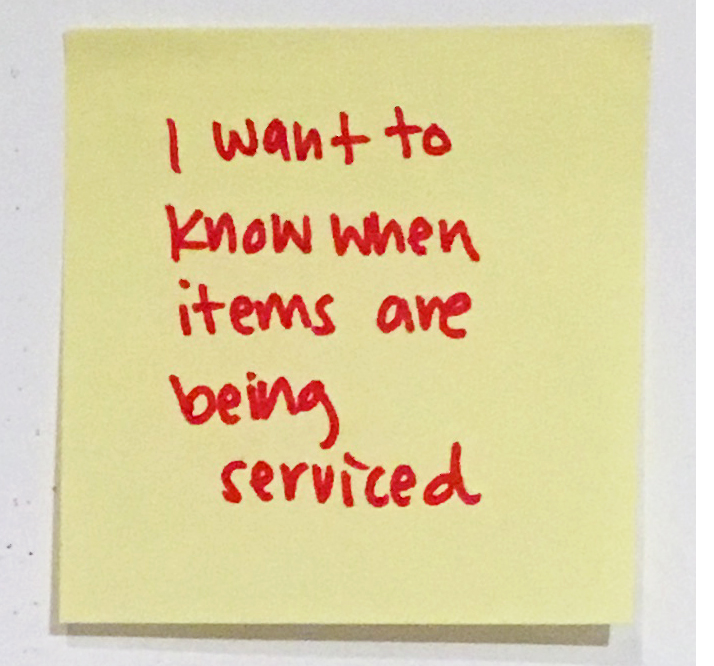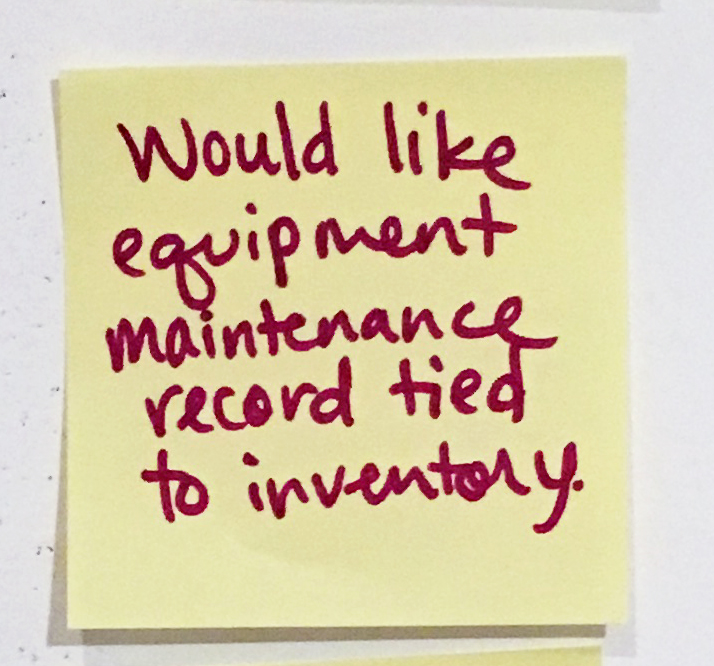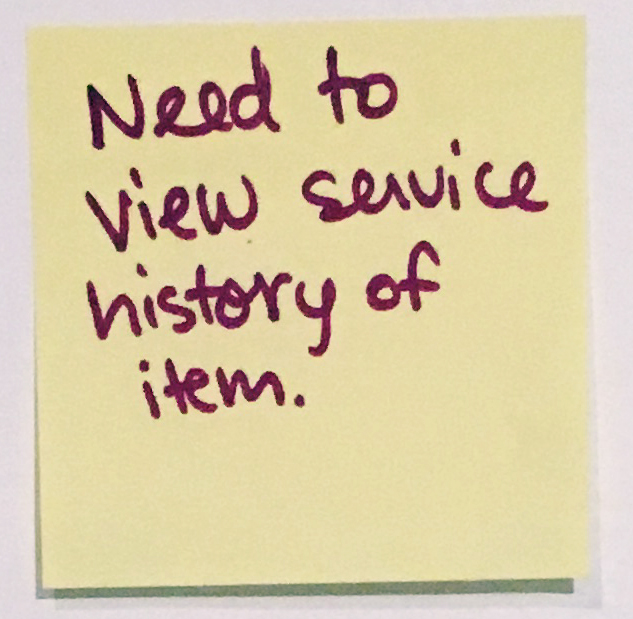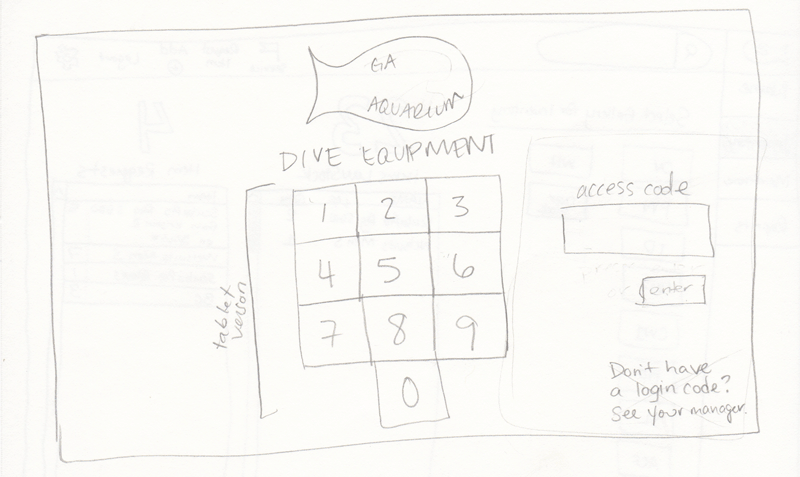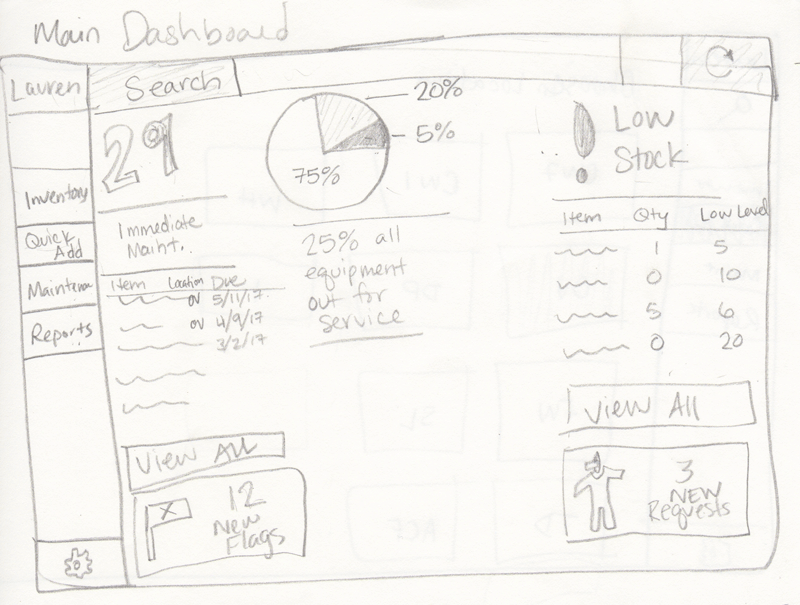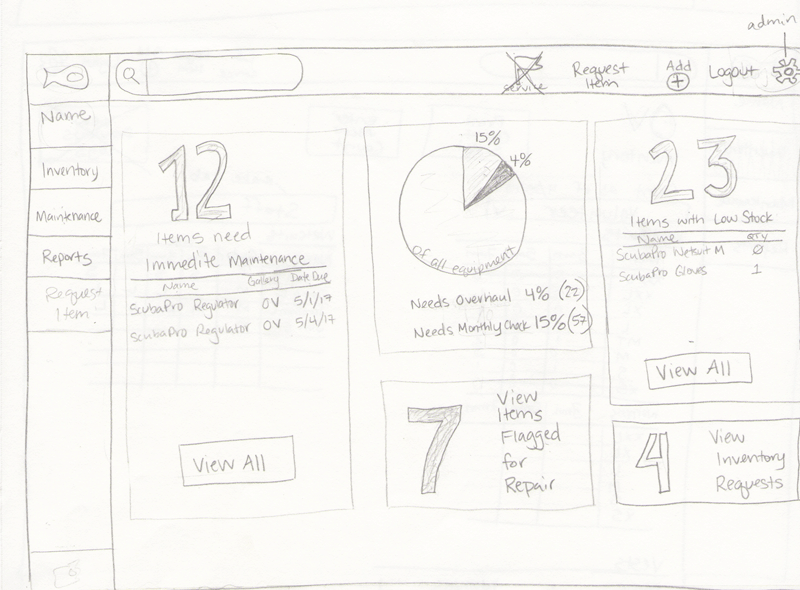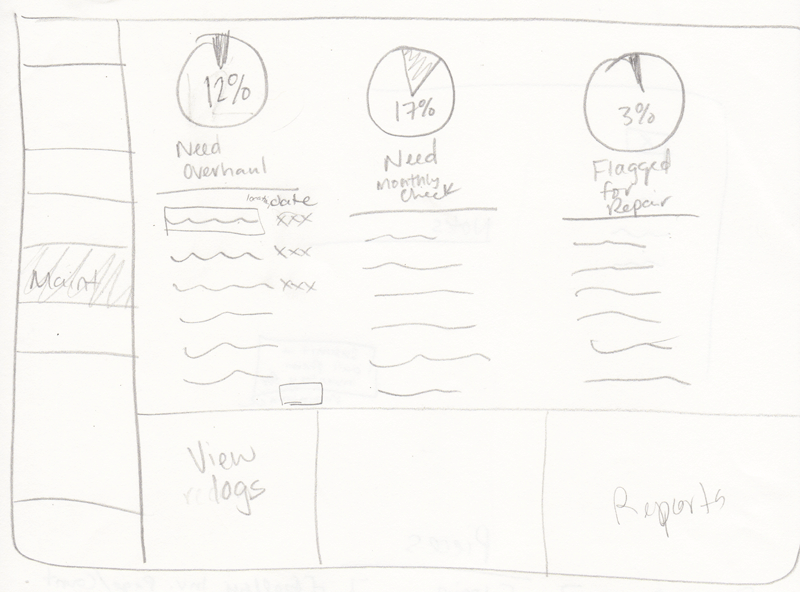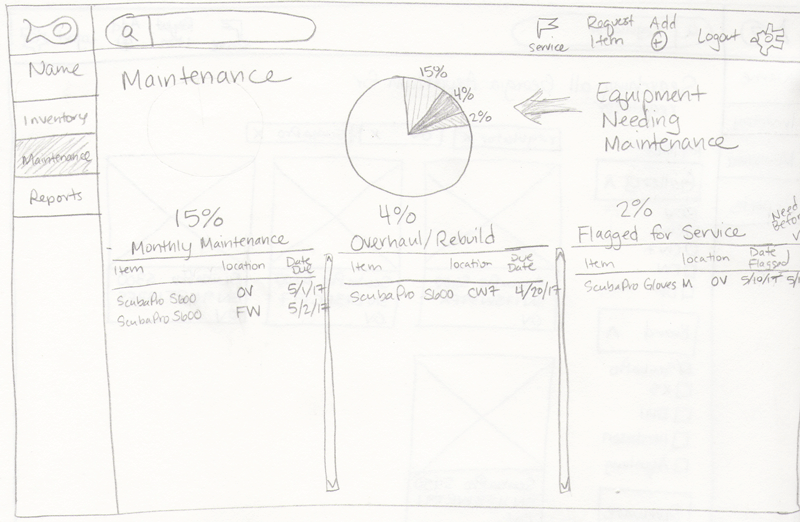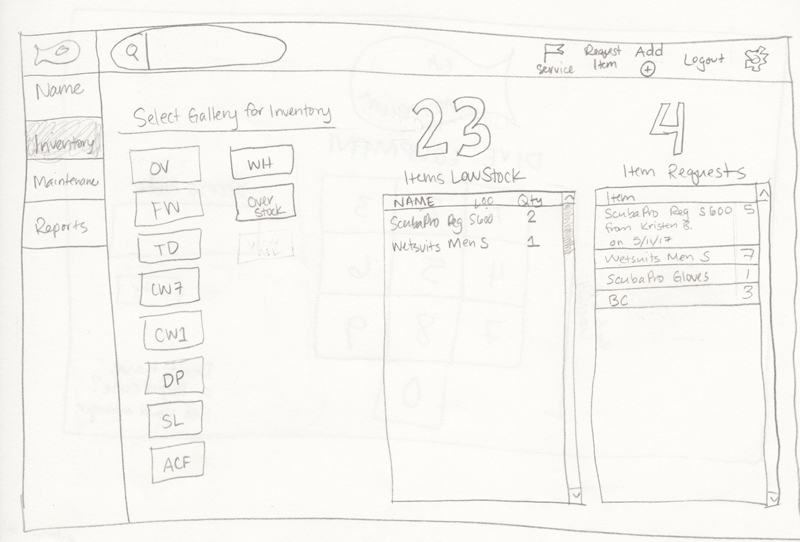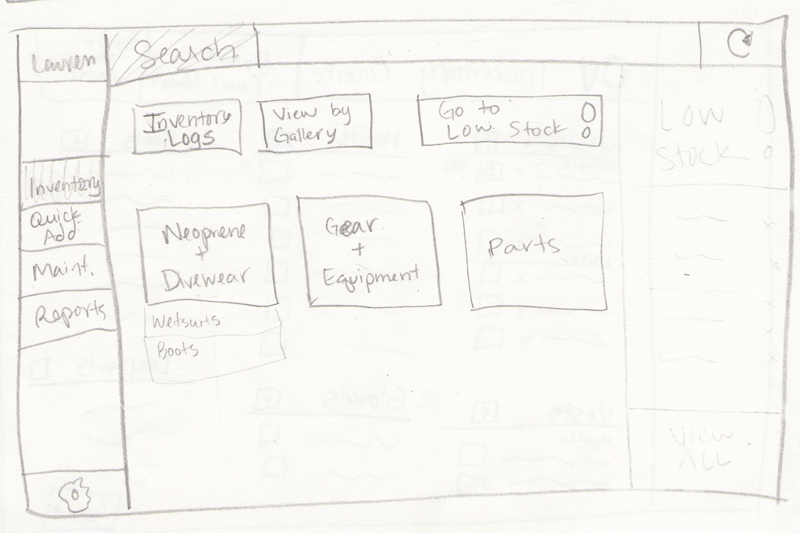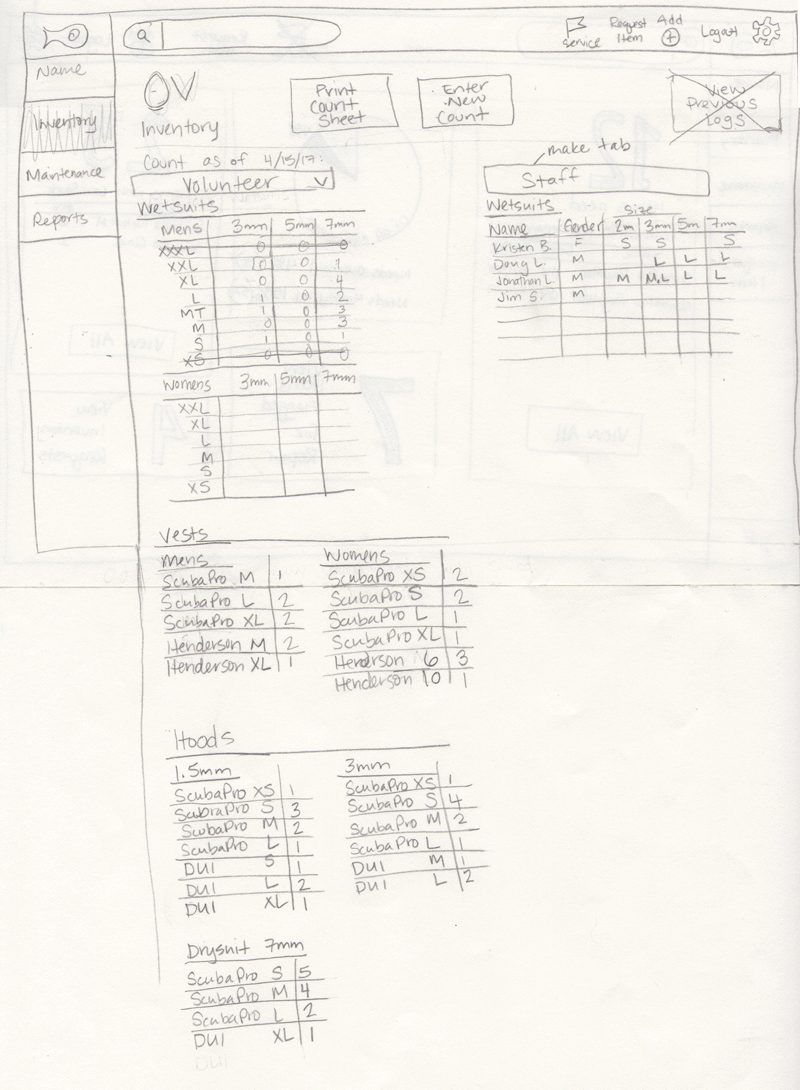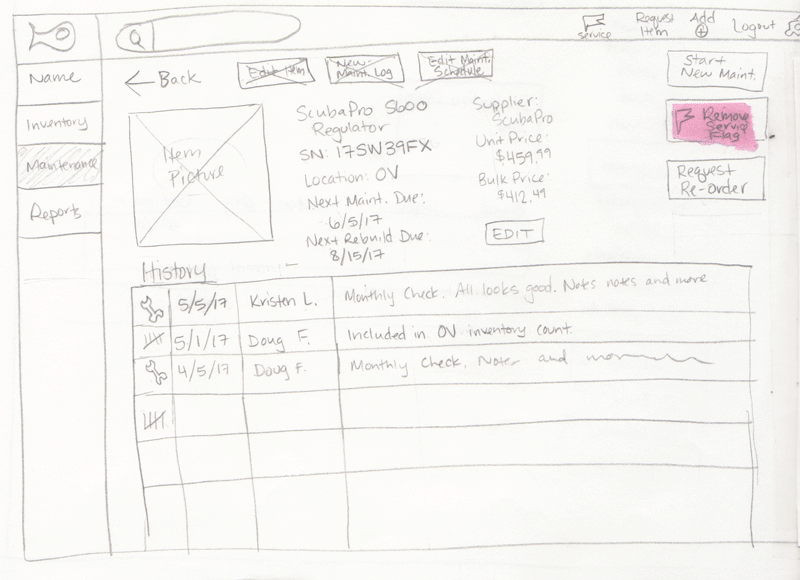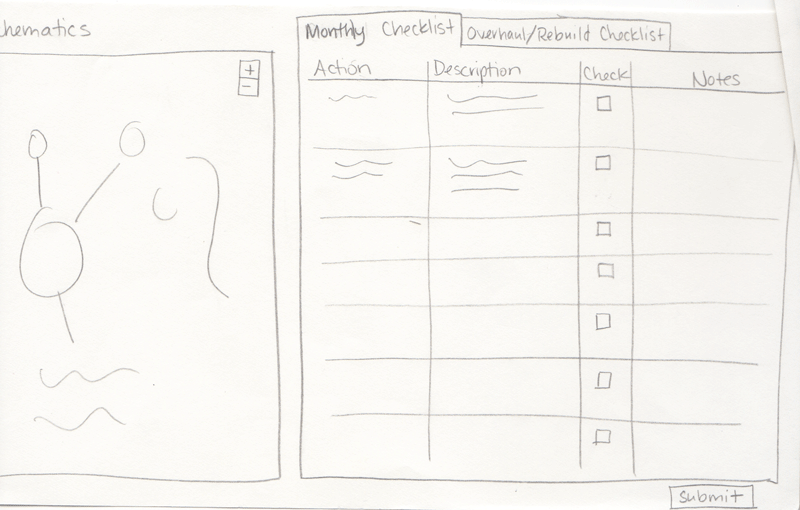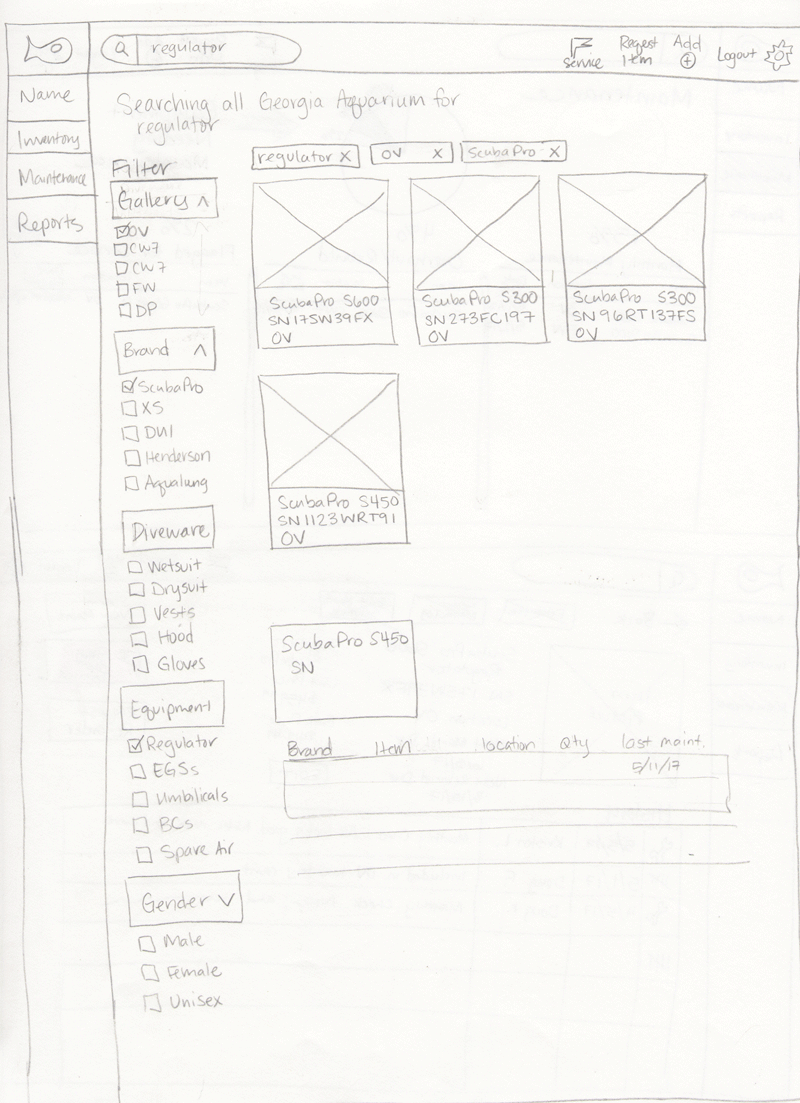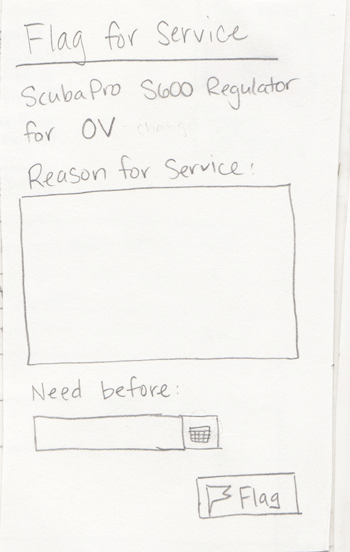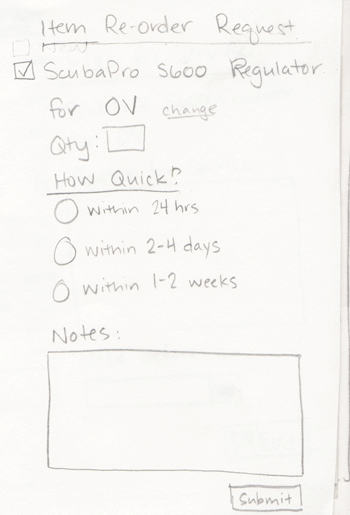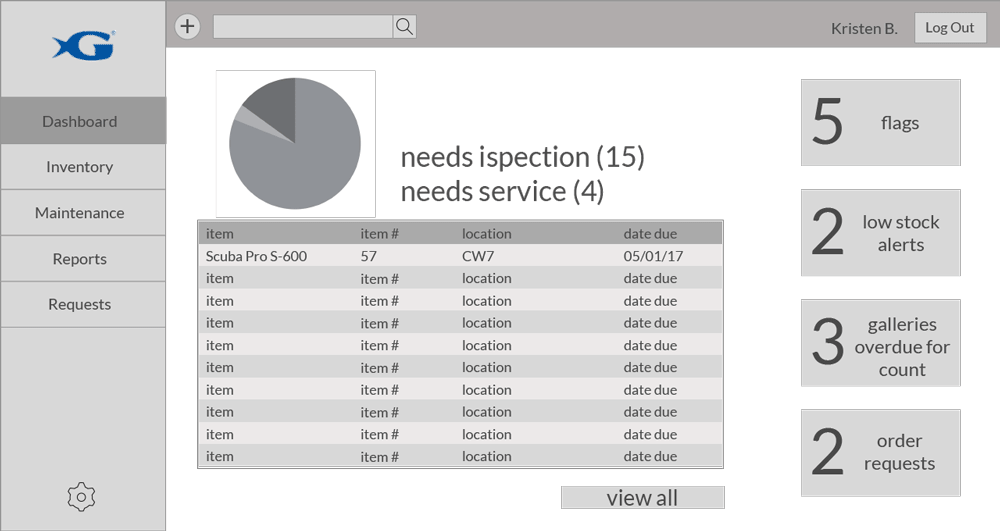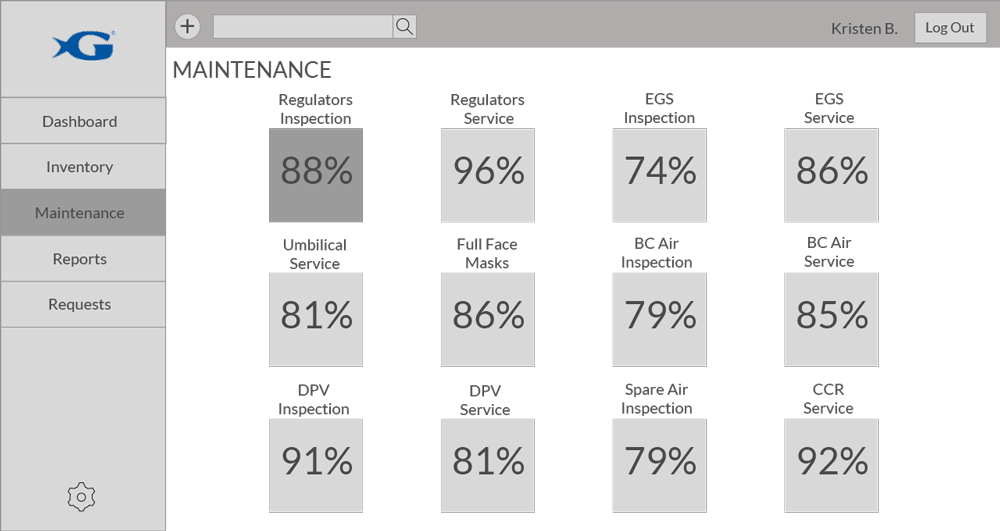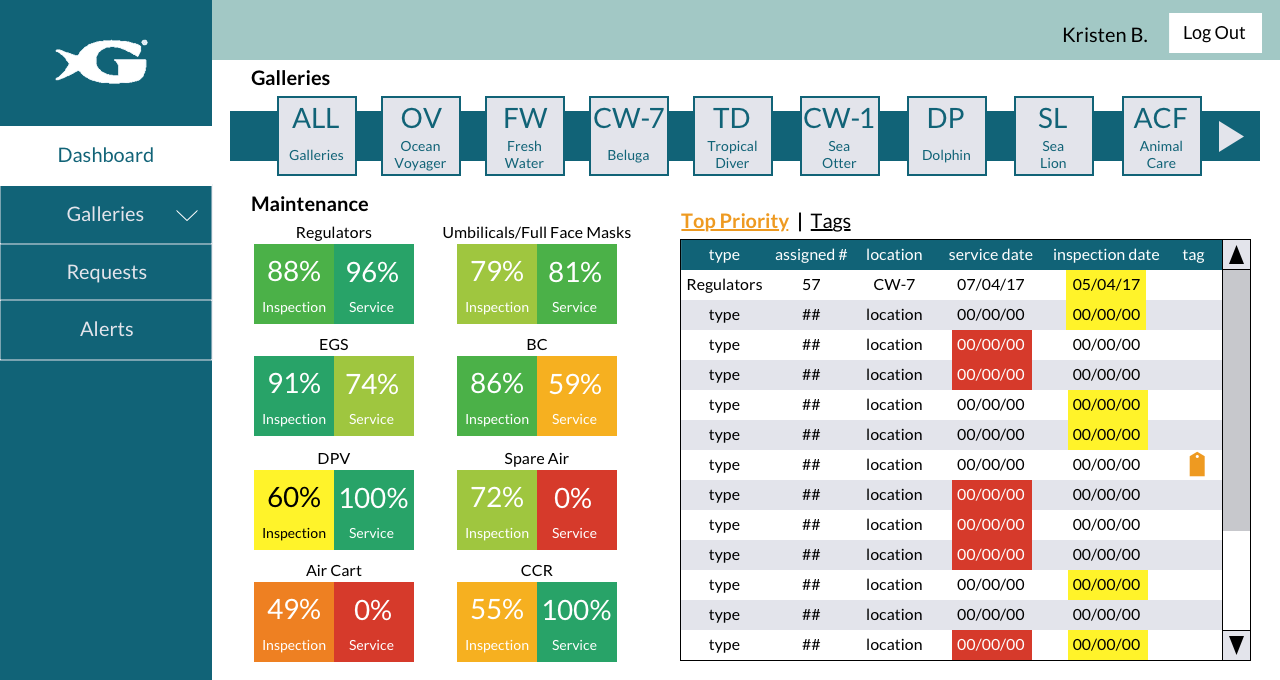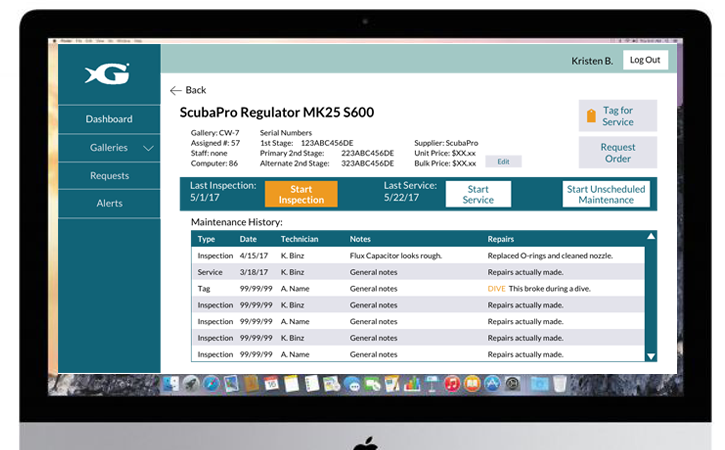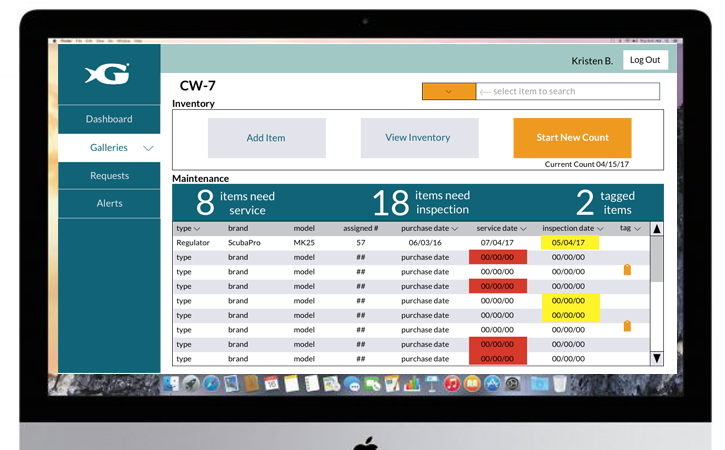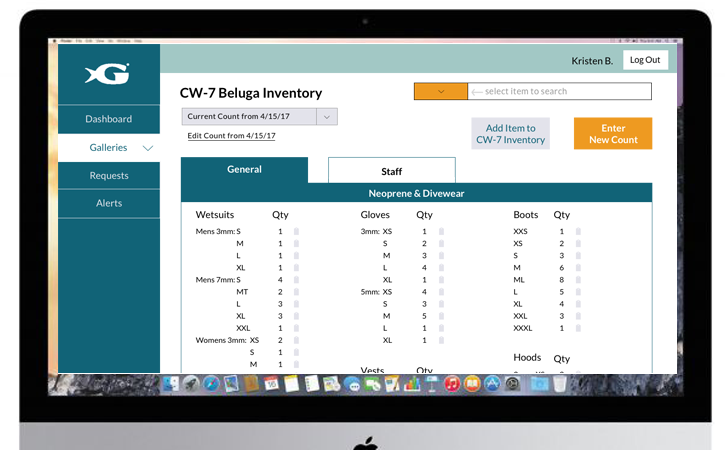Georgia Aquarium Dive Equipment Center (DEC)
An enterprise system tracking inventory and maintenance for dive equipment.
UX Team: Lauren LaRochelle, Bridget Shields, Celine Park
Georgia Aquarium's Dive Operations team wanted assistance with managing their dive equipment inventory and maintenance process. There is not an effective way for divers to search for specific inventory or maintenance information - not only within their own gallery, but also in other galleries. Inventory information is not accurate and is not accessible across different galleries.
Tools Used: Google Forms, Sketch, InVision
Skills Used: Interviewing, Research, Affinity Mapping, Data Synthesis, Information Architecture, Sketching, Wireframing, Prototyping, User Testing
Research
Our team started research with diver surveys and in-person interviews. I learned about how the current system works, the main reasons for tracking inventory and maintenance, and about their pain points.
An overview of the current systems for tracking inventory and maintenance information.
With post-its and sharpies in hand, I took to the wall for an affinity mapping exercise and collected our survey results and individual notes from interviews. Note: stickies do not adhere to whiteboard paint very well.
Affinity Mapping
Synthesizing the affinity mapping results, these are the main quotes and pain points that formed the real problem and helped build out the persona profile.
Persona Profile
Competitive Research
Zoho Inventory, Fiix, and Maintenance Connection are all inventory and/or maintenance tracking softwares. We looked at layouts, navigation, and dashboard elements.
Comparative Research
A thorough user study on ecommerce search and filter functionalities done by the Baymard Institute listed Macy’s as one of the best. We took note of Macy’s successful features to incorporate in our design. [https://baymard.com/blog/macys-filtering-experience]
We looked to Google Calendar for reference on repeat frequency functionality. We looked at how Google repeats a calendar event to assist in how to let the user set the frequency of an item’s maintenance schedule.
Architecture
Site Map
Flow Chart
There are several flow charts to show how to navigate the system for various tasks.
Enter a new inventory count:
Perform maintenance on a specific item:
Add an item to inventory:
Sketches
These are my screen sketches. The team individually sketched screens to brainstorm on how to approach designing the dashboards and the flow between pages.
Wireframes
These are my initial low fidelity wireframes built in Sketch.
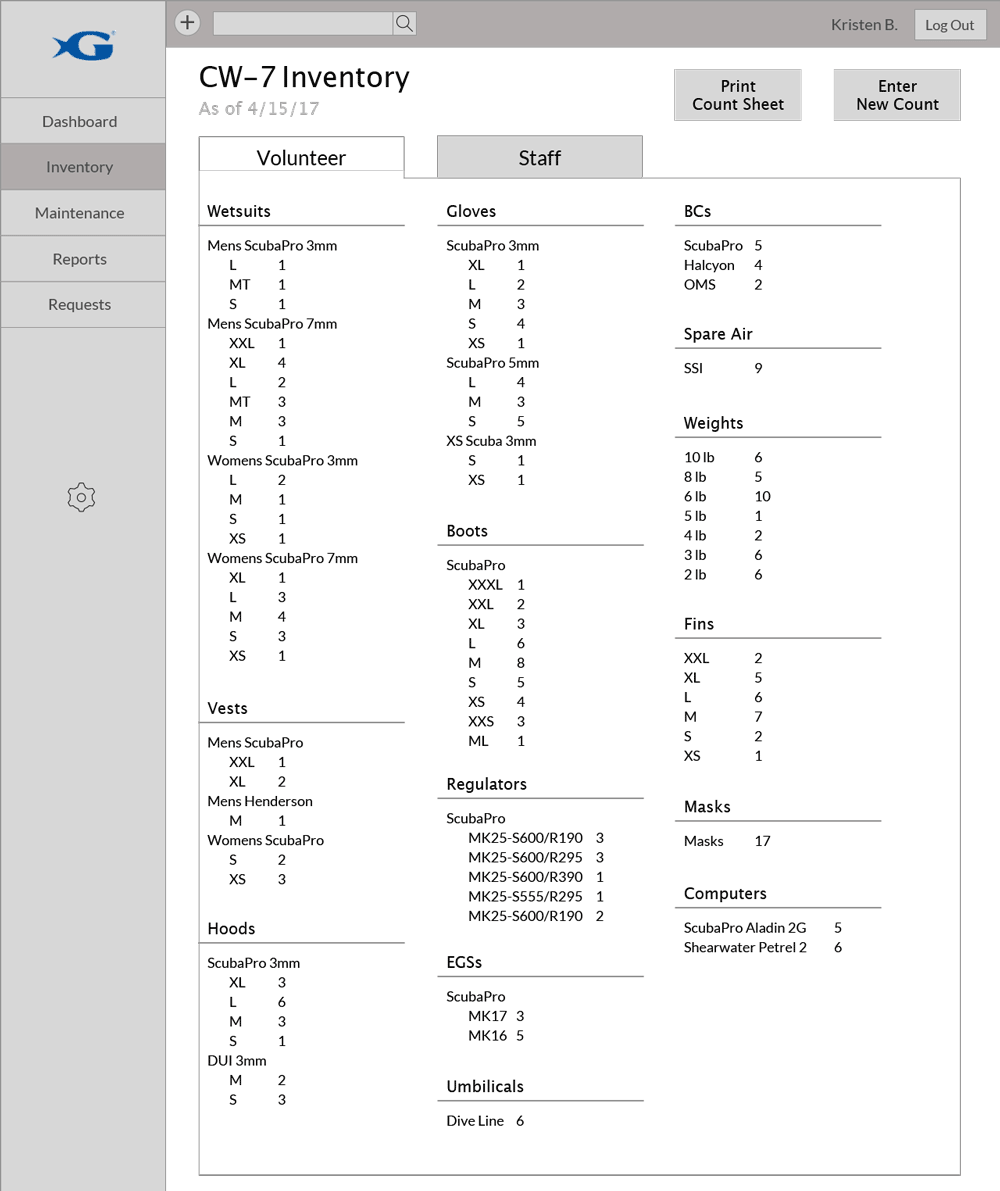

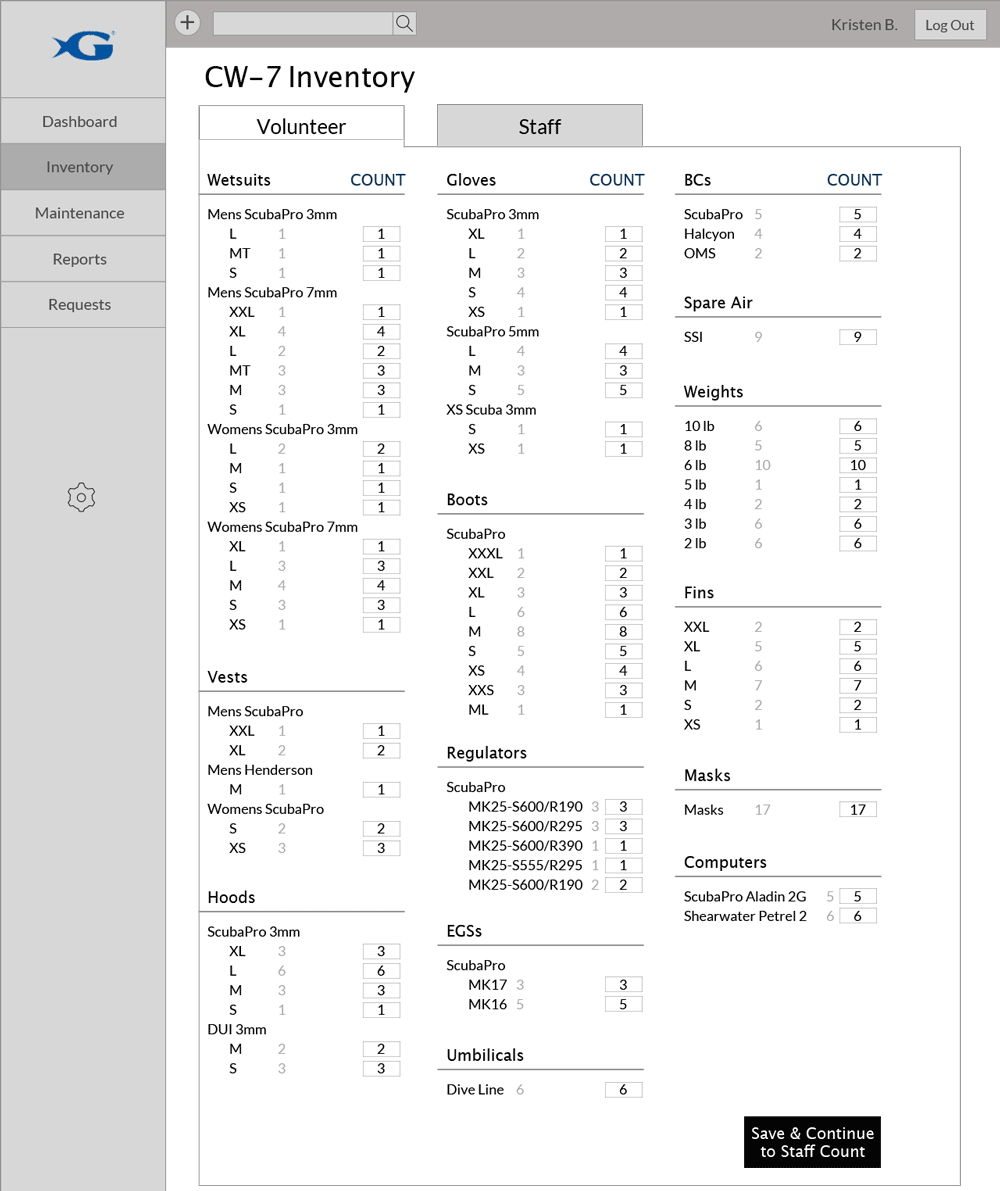
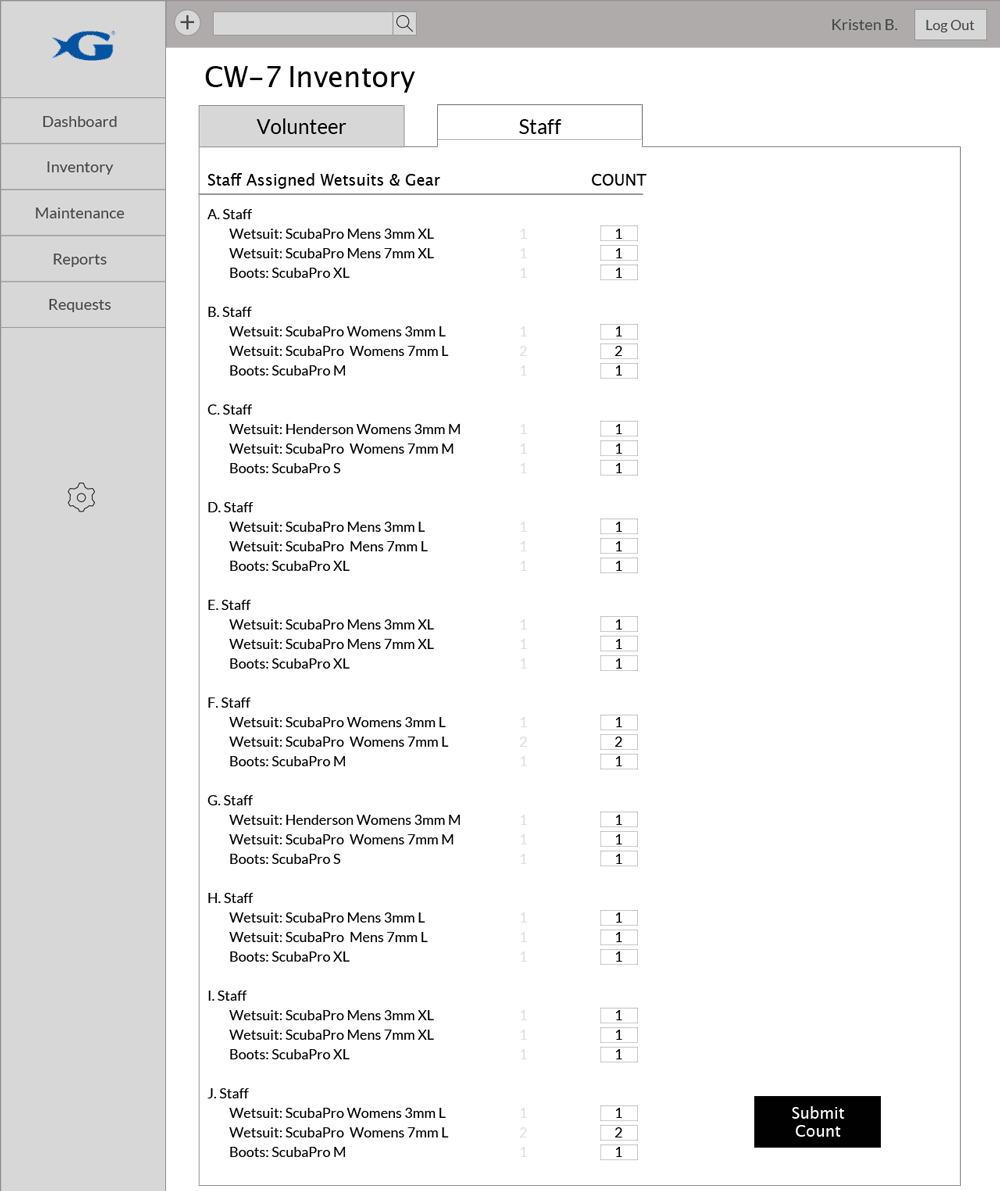
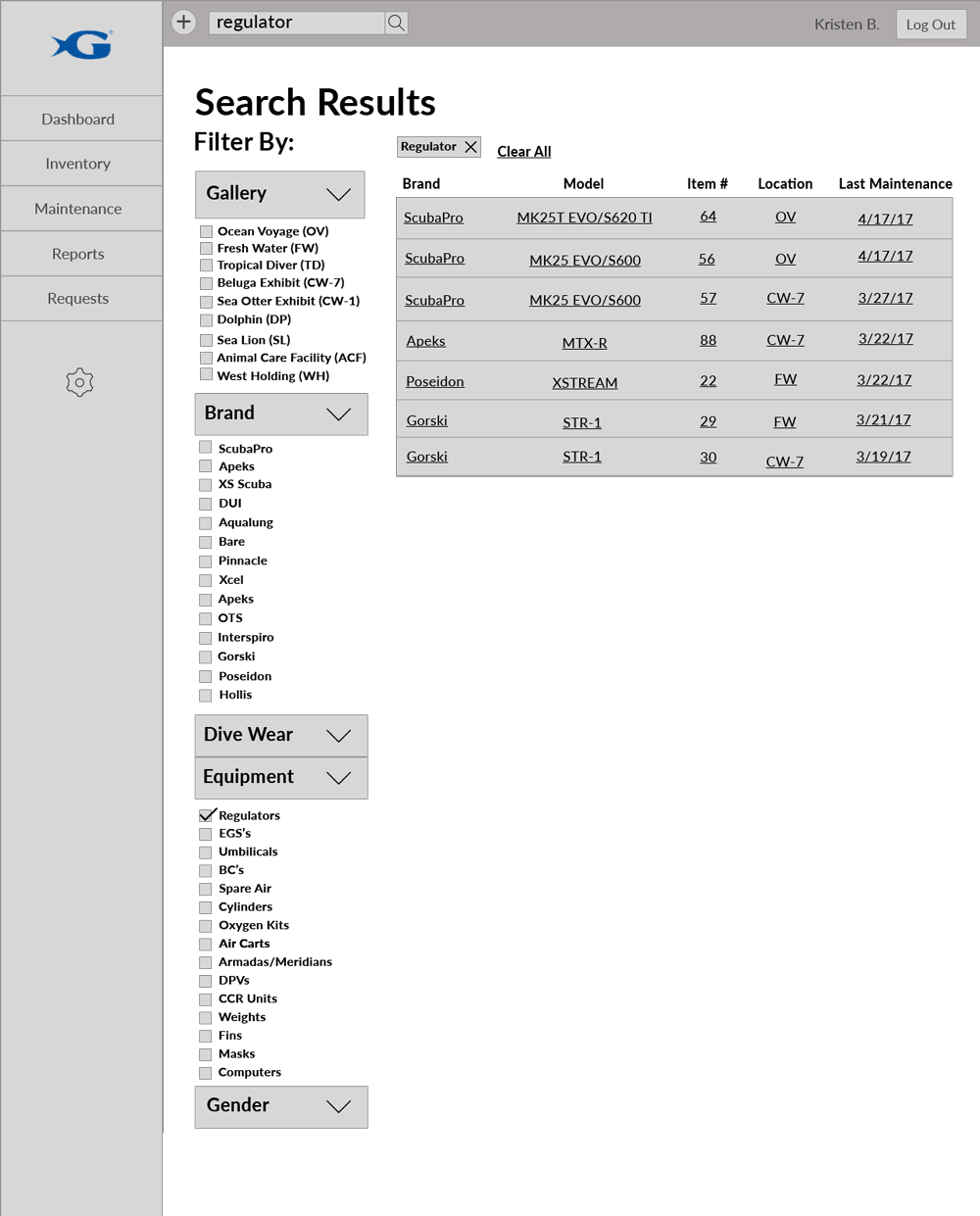
Testing & Iteration
Testing
The team conducted 3 rounds of testing with Georgia Aquarium divers. I conducted a couple tests per round, and collectively we tested between 5-7 users per round.
Iteration
After each round of testing, our team took to the whiteboard to synthesize our results (affinity mapping style sans post-its). I translated my testing notes and observations into bullet points. Note: if you run out of whiteboard space, you can use the glass walls.
Here are some of our most significant edits through our iteration rounds:
The first round of testing included 3 dashboards; the Main dashboard, the Inventory dashboard, and the Maintenance dashboard. After users showed navigation struggles and uncertainty of information location, we combined these into 1 main dashboard.
Here are the initial 3 dashboards:
This is the final main dashboard incorporating most of the elements of the previous dashboards into 1:
Another main revision was to the search functionality. Here is the original wireframe for the search results page:
After a conversation with the developer, we realized we could not have a full search and filter function as intended. We would be able to have search and filter abilities within equipment types. So we altered the pages and were able to address the majority of the divers' searching needs by have 2 different solutions within the system. The first solution is to have a search bar where the item type is selected before entering the search term:
The second solution was to have an "All Galleries" page where equipment could be viewed by preset groupings with inventory counts visible. Each section is collapsable to better navigate the large amount of sections and their sub-sections.
There were several more pieces that were revised throughout the iterations. Terminology was edited as I noticed user language throughout interview and user testing. Processes were edited throughout the system as well.
Branding
I created a basic style guide because it is necessary for a consistent and cohesive UI.
Final Comps
These are the final high fidelity comps presented to Georgia Aquarium divers and development. Divers who would be using this system were pleased with the outcome, expressing familiarity, comfort, and excitement to implement.





